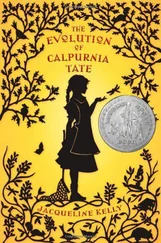Episodes such as this occur many times a day in every society. When they occur, the people involved react to them in accordance with their own personality structures. Few of the persons involved in such a situation stop to think that they are involved in a teaching situation and are helping to mold the society of the future by helping to mold the personality of one of its members. In highly integrated societies, such as most primitive tribes, the outcome of each such episode as this will be similar because the adults involved have similar personality structures and, as a consequence, the children growing up, who occasion such incidents, will experience similar reactions and will themselves develop similar personality structures, whatever these may be. In a more complex and more disintegrated society, such as our own, the personality structures of adults are already so varied that it is difficult to say how they would react to the event we have described. Thus quite different reactions might occur, and the children who are at the center of these episodes, by experiencing different reactions will grow up with different personalities, thus continuing and probably increasing the disintegration of the society's behavior patterns. There can be no doubt that we could have predicted the social response to any act of childish aggression a century or more ago with some assurance: the child would have been punished. But today it would be impossible to guess what might happen; and, just as the possible reactions have become more varied, so the personalities developed from such reactions have become more diverse and the society itself has become less integrated.
The culture of a society consists of much more than the personalities of the people in the society. It consists of all the material things they use, such as the dwellings, tools, and clothing already mentioned. It consists of patterns of action, feeling, and thought. It consists of established social relationships between one person and another as well as between persons and objects. It consists of all kinds of fine, subtle, and changeable interrelationships between people and between groups, relationships and feelings that are sometimes obvious but are frequently unobserved, reactions that are so long established (and thus so "natural") that they are neither noticed nor questioned. Each individual in a society is a nexus where innumerable relationships of this character intersect. Taken as a whole, these innumerable relationships (many of them deeply imbedded in his neurological system) form a status, which was slowly created as he grew up and will be abruptly destroyed when he dies. The gap created in the fabric of society by the death of an individual is slowly closed as some of the ruptured relationships are healed over; many others are taken up by different persons; and the many social functions that formed the previous status are taken over by a number of quite separate persons.
Culture is thus a very subtle and very complex thing. From our point of view it is the cushion between man's purely animal nature and the natural environment. From another point of view it is the social heritage passed down from generation to generation. From another point of view it is a complex medley of personalities, material objects, patterns of behavior, subtle emotional relationships, accepted intellectual ideas and intellectual assumptions, and customary individual actions. From any point of view it is constantly changing, and forms the chief subject of study in all the social sciences.
This culture is both adaptive and persistent. It is adaptive because it is able to change, and it is persistent because it will not change without cause. The causes of such social change are both internal and external to the culture. They include the geographic, the biologic, and the cultural environment. The geographic environment includes such things as terrain and climate. Obviously, culture must adapt itself to these; consequently, the Eskimos have quite a different culture from the Arabs of the desert or the jungle Negroes. And it is equally clear that as geographic conditions change, cultures must change too. When all of Europe was under glacial conditions, the cultures there must have been different from what they became when all of Europe was under thick forests (about 8000 B.C.) or under temperate conditions (about 1000 B.C.). The cultures in Europe adapted themselves to these changes.
Similarly, culture adapts itself to changing biologic conditions. When the herring swarmed in the North Sea in the late Middle Ages or the buffalo swarmed on the North American plains in the early nineteenth century, the people living in these areas had cultures adapted to these conditions. But when the herring disappeared or the buffalo were largely exterminated, the people of northern Europe or the Indians of the Great Plains had to adapt their cultures to such changing biologic environment.
In a similar fashion, but to a much greater degree, cultures must adapt themselves to changing cultural environments. These latter include the culture itself as well as other different cultures. When a culture changes because one part of it must adapt itself to a different part of the same culture, we say that it is self-adaptive. Thus, when a culture gets a different weapon (as when the Indians on the Great Plains obtained the horse after 1543 or obtained guns after about 1780), the religious, intellectual, social, economic, political, and military aspects of the culture are changed by this new acquisition. At the same time a culture must adapt itself to other cultures, as the culture of Western civilization has to adapt itself to the culture of Soviet Russia or as the people of Tahiti or the people of China had to adapt their cultures to the culture of Western civilization during the nineteenth century. When a culture is not able to adapt itself to changes in its geographic, biologic, or cultural environment, it may perish, just as the cultures of the American Indians or the culture of the ancient Carthaginians perished when these peoples were unable to adapt themselves to the impact of Western civilization or to that of Classical civilization. It is worth noting that when animals (like the dinosaurs) are incapable of adapting their physical structure to changes in the environment, the species perishes; but man (who has the insulation of culture between his physical structure and his environment) merely undergoes destruction of his culture instead of destruction of his species when his culture cannot adapt itself to changes in the environment.
It sometimes happens that a culture is unable to adapt itself to changes in part of itself. For example, a change in weapons (which is part of culture) may be so drastic (like the atom bomb) that the other parts of the same culture, such as the economic and political systems, cannot adapt themselves to this military change and the culture will perish. This means that cultural changes are not necessarily progressive, but are frequently irrational, retrogressive, and destructive. A culture may even commit suicide. For example, at a remote period the culture of the Aztec people in Mexico changed on the religious level by the introduction of human sacrifices to one of their gods. The military level adapted itself to this religious change by changing its tactics from an effort to kill the enemy to an effort to capture the enemy (so that captives could be used as religious sacrifices). This change injured the culture's ability to defend itself because the Aztecs no longer fought to defend themselves or to kill their enemies, but fought to capture them for sacrifices. When the Spaniards under Hernando Cortez arrived in Mexico in 1519, the Aztec defense was much hampered by the fact that they were fighting to capture while the Spaniards were fighting to kill.
Because culture is adaptive to itself, it is integrative; but, because it is also adaptive to diverse external influences as well as to the human drive to realize human potentialities, no culture ever becomes integrated. By "integrative" we mean that the different parts of a culture adapt themselves to one another and tend to become increasingly an interlocking unified system in which each part fits snugly into all the surrounding parts. But this result is never reached, for, at the very moment that one part of culture is adapting itself to another part to become more closely fitted to it, it is becoming less adapted to some third part which is also changing under influences from some other source. Thus no culture ever becomes integrated. This is a good thing, because a fully integrated culture would be rigid and would resist change so completely that it would become incapable of adapting itself to changes in its external environment on the one side and incapable of fulfilling man's drive to realize his potentialities on the other side. A fully integrated culture would be like the dinosaurs, which had to perish because they were no longer able to adapt themselves to changes in the external environment. Accordingly, culture is made up of loose-fitting parts that are only partially adapted to one another, to the environment, and to human needs, and are constantly changing in response to shifting pressures from these three directions. It is able to survive just because it is not rigidly integrated.
Читать дальше










